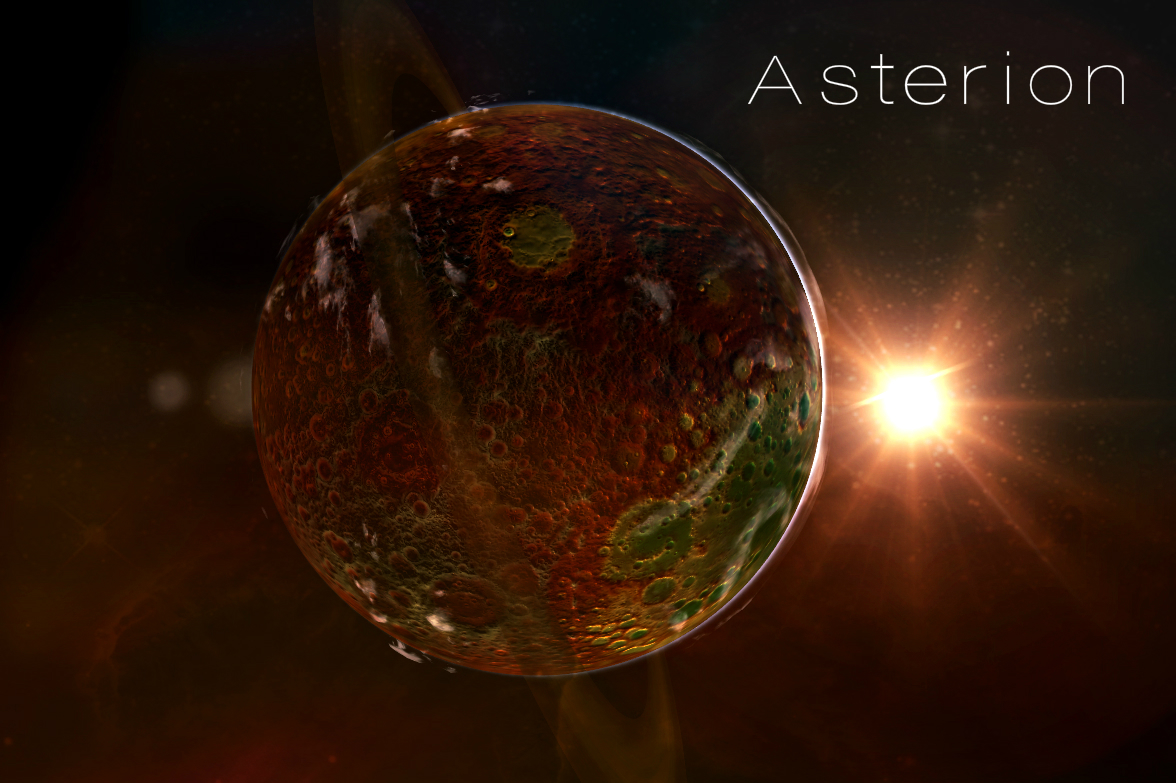asterion
About Asterion:
Asterion, the metal planet! High metal content in the soil causes it to erode from the acidity in the seas, causing corroded shores. There is a lot of sand and pumice like towers nested within them and the local flora and fauna are sturdy and reinforced creatures designed to withstand the planets higher gravity and harsh rains. Navigation gear relying on magnetic bearings have no function here. Asterion carries a warmer temperature with surprisingly almost humid nights with little breeze. The surface of the planet is conductive to electricity moreso than most places, so electrical charges are not advised unless thoroughly investigated. Despite its harsher climates, it seldom rains so hazards of damage to your envirosuit are not likely and would require long exposure. All of that said, it is quite beautiful. Just avoid drinking the waters or prolonged exposure in their seas. Sea landing is not advised.
Important Regions:
-The Caverns (The primary surface of the planet, primarily on the dark side of the planets face. Source for purified waters and shelter from dynamic climate differences)
-The Eroding Shore (The waxing and waning metal surfaces of Asterions Sea located southeast)
-Impact Site 177 (Large crater caused by unknown impact centuries ago in the northern hemisphere. Unusual garden region, no further data currently available)
-The Hive(Located inside Impact Site 177, a particular cavern with city like proportions and unusual structure and faint green bioluminescent forms)
Discovered Species:
Scarab (Eroding Shore)
Taraz (Impact Site 177)
Insect Vibe (The Caverns)
Zahne Vibe (The Hive)
Beelzebub (The Hive)
